- Clinical Professor of Neurosurgery (ret.) and Adjunct Professor of Medical History (ret.), Mercer University School of Medicine; President, www.haciendapub.com, Macon, Georgia, USA
Correspondence Address:
Miguel A. Faria
Clinical Professor of Neurosurgery (ret.) and Adjunct Professor of Medical History (ret.), Mercer University School of Medicine; President, www.haciendapub.com, Macon, Georgia, USA
DOI:10.4103/2152-7806.156634
Copyright: © 2015 Faria MA. This is an open-access article distributed under the terms of the Creative Commons Attribution License, which permits unrestricted use, distribution, and reproduction in any medium, provided the original author and source are credited.How to cite this article: Faria MA. Neolithic trepanation decoded- A unifying hypothesis: Has the mystery as to why primitive surgeons performed cranial surgery been solved?. Surg Neurol Int 07-May-2015;6:72
How to cite this URL: Faria MA. Neolithic trepanation decoded- A unifying hypothesis: Has the mystery as to why primitive surgeons performed cranial surgery been solved?. Surg Neurol Int 07-May-2015;6:72. Available from: http://surgicalneurologyint.com/surgicalint_articles/neolithic-trepanation-decoded-unifying-hypothesis/
Abstract
The perplexing mystery of why so many trephined skulls from the Neolithic period have been uncovered all over the world representing attempts at primitive cranial surgery is discussed. More than 1500 trephined skulls have been uncovered throughout the world, from Europe and Scandinavia to North America, from Russia and China to South America (particularly in Peru). Most reported series show that from 5-10% of all skulls found from the Neolithic period have been trephined with single or multiple skull openings of various sizes. The unifying hypothesis proposed by the late medical historian Dr. Plinio Prioreschi (1930-2014) regarding the reason for these trepanations (trephinations) is analyzed. It is concluded that Dr. Prioreschi's cohesive explanation to explain the phenomenon is valid and that his intriguing hypothesis is almost certainly correct. In the opinion of this author, the mystery within an enigma has been solved.
Keywords: History of medicine, Neolithic, primitive cranial surgery, trepanation, trephination, trephined skulls
The perplexing mystery of why so many skulls from the Neolithic period have been uncovered all over the world with trephination holes has been solved for nearly 25 years, and yet this fact has not percolated through recent surgical history. Thus uninformed, the mystery continues to perplex medical historians. For about the same period of time, the “Renaissance” physician, scientist, linguist, and medical historian, the late Plinio Prioreschi (1930–2014), M.D., Ph.D., warned physicians and surgeons of the danger of neglecting medical history and delegating the task to professional (social) historians with little or no medical or surgical knowledge.[
Returning to the subject at hand, when I wrote my series of articles on “Violence, mental illness, and the brain – A brief history of psychosurgery” (2013), I offered the conventional views on the topic of trephination in primitive medicine:
“Trephination (or trepanation) of the human skull is the oldest documented surgical procedure performed by man. Trephined skulls have been found from the Old World of Europe and Asia to the New World, particularly Peru in South America, from the Neolithic age to the very dawn of history. We can speculate why this skull surgery was performed by shamans or witch doctors, but we cannot deny that a major reason may have been to alter human behavior – in a specialty, which in the mid-20th century came to be called psychosurgery!”[
Following the footsteps of the renowned physician and medical historian Dr. William Osler and other conventional scholars,[
I had unfortunately not read Dr. Prioreschi's seminal article, “Possible reasons for Neolithic skull trephining,”[
Prioreschi had extensively reviewed surgical history and found no cohesive explanation for the phenomenon. Spurred by the unsolved mystery, he applied the deductive reasoning of the celebrated but fictional detective, Sherlock Holmes (created by another physician and author, Sir Arthur Conan Doyle), to the task and arrived to the logical explanation that follows. Before we discuss Prioreschi's intriguing hypothesis, we should first consider some key facts related to the problem at hand.
First, more than 1500 trephined skulls have been uncovered throughout the world, from Europe and Scandinavia to North America, from Russia and China to South America (particularly in Peru). Most reported series show that from 5% to 10% of all skulls (e.g., ranging from “as low as 2.5% to as high as 19%”) found from the Neolithic period have been trephined with single or multiple skull openings of various sizes.[
Second, Prioreschi pointed out important additional facts. Neolithic man was a hunter and his life experience revolved around this activity. Cave dwelling paintings also testify to this phenomenon. Consequently, he was very aware of hunting and war injuries. Neolithic man noticed, for example, that penetrating injuries to the chest and abdomen were usually fatal to man and animal. Likewise, massive blunt head injuries were invariably lethal. Nevertheless, blunt injuries to the head, if not massive, were not invariably fatal. With mild blows to the head, man or animal could be knocked down briefly and then get up and run. At other times, a man could be left for “dead” in the back of the cave, but after a period of time, he could “miraculously” recover and become “undead.” It was only with head injuries that primitive man noted that this phenomenon took place – namely suddenly becoming “dead” after an injury and then “undead.” Or, as we would describe it, that a head injury caused a momentary loss of consciousness (LOC), as in a concussion, or a more prolonged LOC, as in a cerebral or brainstem contusion – and then recover as the cerebral edema subsided and neural circuits were reestablished. Of course, primitive man did not understand the pathophysiology involved. For the Stone Age man, there was also no awareness of the inevitability of death and no recognized mortality as part and parcel of the human condition. Diseases, pain and suffering, and death took place as a result of sorcery, evil spirits, or some other supernaturalistic intervention. People could become gradually “dead” from an illness or injury and then become “undead” because of some phenomenon. In the case of injuries, these conditions were caused by observed specific events, such as penetrating injuries or serious blows. These occurrences did not occur randomly. Such was also the case with becoming “dead” and “undead,” and the primitive surgeon of Neolithic times understandably reasoned that he could also do something to bring back to life those individuals essential to the survival of the group.[
Observing that small injuries to the head, more frequently than other injuries, resulted in “dying” (i.e., LOC with a concussion or a contusion resulting in coma) and “undying” (i.e., spontaneous recovery), they must, according to Prioreschi, come to believe that “something in the head had to do with undying.”[
The head was chosen for the procedure, not because of any particular intrinsic importance or because of magic or religious reasons, but because of the unique and universally accumulated experience observed by primitive man in the Stone Age with ubiquitous head injuries during altercations and hunting. Otherwise, the pelvic bone or femur could have served the same purpose. We must recall that even the much more advanced ancient Egyptian, Mesopotamian, Hindu, and even Hellenic civilizations believed the heart to be the center of thought and emotions, not the brain. In fact, the association of the heart with emotions lingered to the present age.
Since most Neolithic skulls were not trephined, Prioreschi further hypothesized the procedure was reserved for the most prominent male members of the group and their families.[
References
1. Last accessed 2015 Apr 11. Available from: http://www.surgicalneurologyint.com/text.asp?2013/4/1/49/110146 .
2. Kurin DS. Trepanation in south-central Peru during the early late intermediate period (c. AD 1000–1250). Am J Phys Anthropol. 2013. 152: 484-94
3. Ortner DJ, Putschar WG.editors. Identification of pathological conditions in human skeletal remains. Washington DC: Smithsonian Institution Press; 1985. p. 96-
4. . In Progress. Available from: http://www.surgicalneurologyint.com .
5. Prioreschi P.editors. A History of Medicine. Primitive and Ancient Medicine. Omaha, Nebraska: Horatius Press; 1995. I: 21-30
6. Prioreschi P.editors. A History of Medicine. Vol. I: Primitive and Ancient Medicine. Omaha, Nebraska: Horatius Press; 1995. p. 30-2
7. Prioreschi P. Possible reasons for Neolithic skull trephining. Perspect Biol Med. 1991. 2: 296-303
8. Rifkinson-Mann S. Cranial surgery in Peru. Neurosurgery. 1988. 23: 411-6
9. Robison RA, Taghva A, Liu CY, Apuzzo ML. Surgery of the mind, mood and conscious state: An idea in evolution. World Neurosurg. 2012. 77: 662-86
10. Rogers SL.editors. Primitive Surgery. Thomas. Springfield, Illinois: Charles C; 1985. p. 19-
11. Walker AE.editors. A History of Neurological Surgery. New York: Hafner Publishing; 1967. p. 1-22


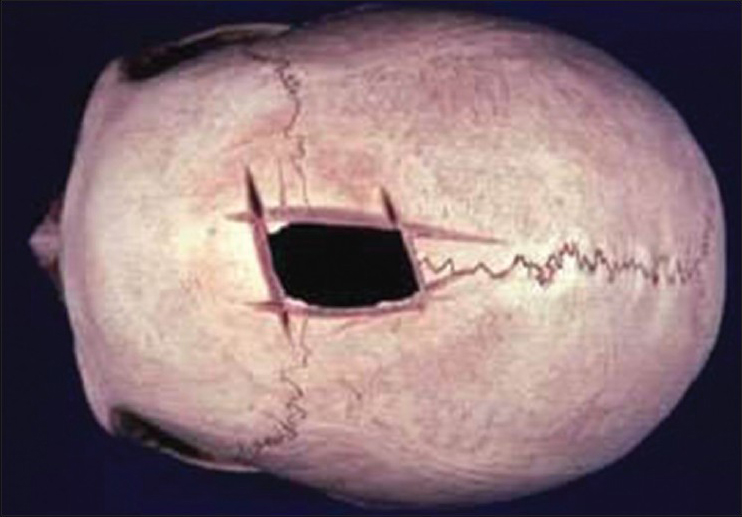
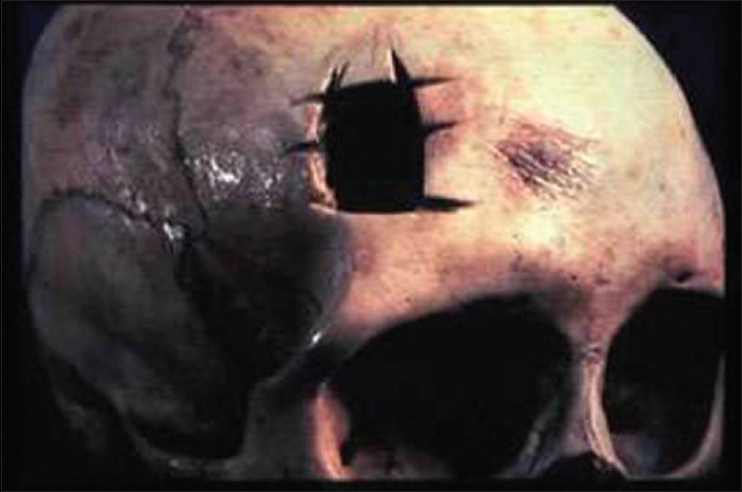
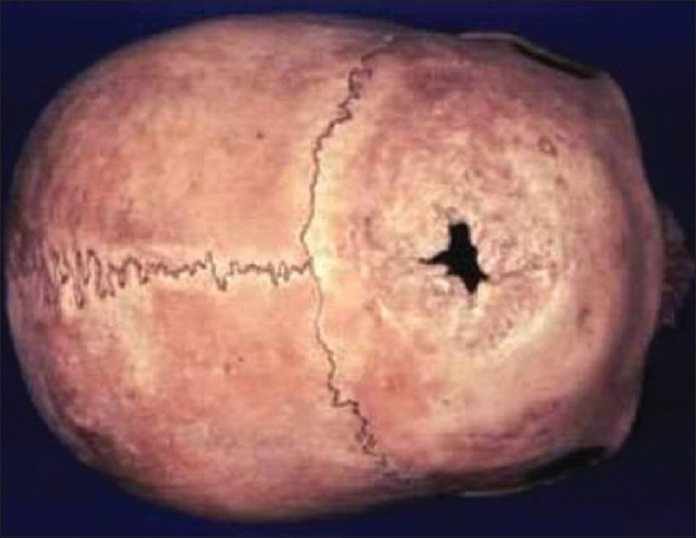
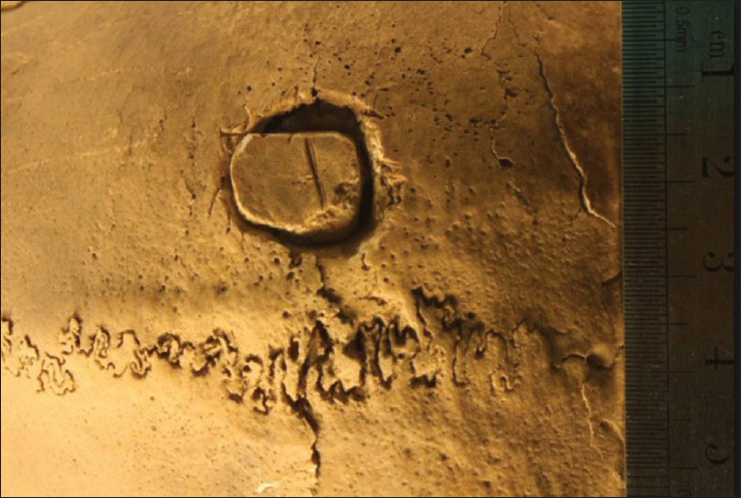
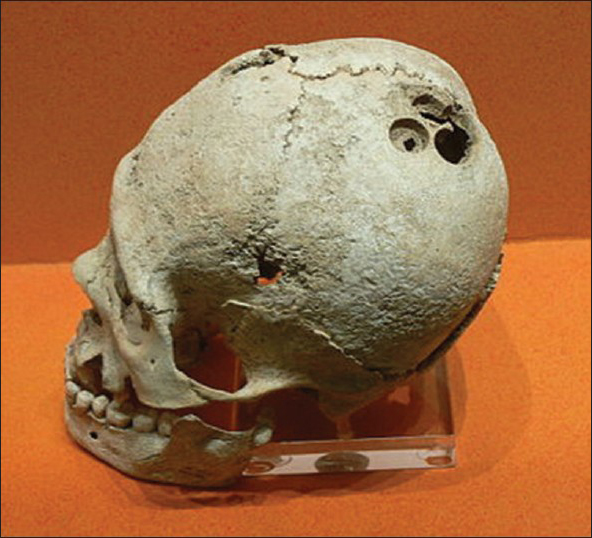




Dr. Miguel A. Faria
Posted August 15, 2020, 9:12 am
Prioreschi’s work has solved the riddle of Neolithic and perhaps Bronze age trepanations. Rudimentary trepanations performed in the late 20th century by primitive people, such as has been witnessed by several journalists in remote villages in Africa (Kenya) do not contravene Prioreschi’s theory. All remote areas have not been free of Western influences. The original purpose for the trephining (or trephination) has been forgotten and replaced with what the medicine men have heard from Western travelers and city dwellers — for example that skull fractures require surgery!
Those trepanations carried out by curanderos, shamans and African medicine men purportedly done for “fractures” remain very primitive, even if performed with rough iron “instruments,” but without anesthesia or antisepsis, etc. The presence of linear skull fractures or absence of palpable skull fractures makes it highly unlikely the meninges were violated and therefore remain at a very low risk of infections and meningitis — especially in an otherwise very vascular scalp in relatively young people.
We neurosurgeons remain amazed how much our colleagues in head and neck and plastic surgery can “get away with,” with what we believe is not enough sterile techniques, but they can do so because they almost never enter the dura and do not violate the meninges and the vascularity of these regions precludes them from easy infection, as otherwise would be the case. When there is a CSF leak we get involved and repair it with out own super sterile precautions.
Remarkable Footage: African Healer performs Head Surgery in the outdoors (2017) . Unfortunately, the narrator, as many other narrators in several documentaries, exaggerates. There is no evidence of intracranial surgery with opening of the meninges. There is also an excellent story in In Search of with Leonard Nimoy, c. 1970s, but I cannot find it.